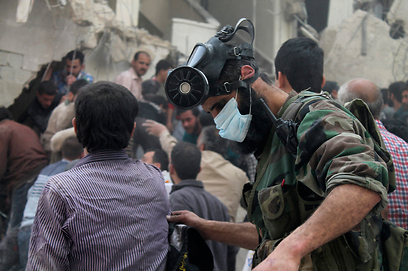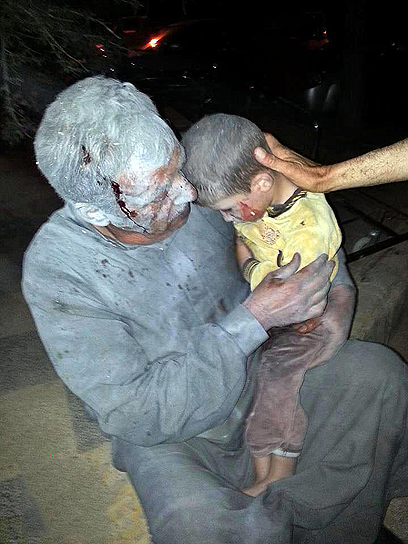
The chemist added that the regime is not likely to unleash its chemical stockpiles unless it “no longer cares about the world knowing".
Related stories:
- Home front report: High likelihood of chemical terror
- Rebels: Dozens wounded in Damascus chemical attack
- Turkey: Tests confirm chemical weapons used in Syria
He further added, "If the regime is to fire a Scud-B with a chemical warhead filled with sarin, the missile would create a chemical cloud in the atmosphere that is 3km long and 500m wide, which could be fatal to all people under it."
He claims that the regime has only used sarin gas in small quantities to halt rebel advances in four towns in the suburbs of Damascus, in Aleppo’s Sheikh Maksoud district, in Idlib's Saraqeb town and in Homs' al-Khalidiyeh district.

Aleppo. Were chemical weapons used against civilians? (Photo: Reuters)
"The intention was to incapacitate rebels and force them out of strategic areas, while keeping the deaths among their ranks limited," the chemist said, who added that he was speaking out "to dispel the myths on chemical weapons in Syria".
According to the report, the chemist fled Syria before December 23, 2012, when the first claims emerged about the regime’s use of chemical weapons in the neighborhood of Khaldiyeh, in the city of Homs.
Al-Jazeera said that he was employed at the Center for Scientific Studies and Research (CSSR), Syria’s main agency for the development and enhancement of weaponry in Jamraya which Damascus claims has been bombed twice by Israel. The chemist estimates some 9,000 people work at the center, with up to 6,000 working in rocket development and around 300 in chemical weapon development.

Photo: AP
“Syrian researchers who work with chemical weapons are not known to people at the street level, nor to the ministries, nor to the general army,” he said. He noted that he did not see evidence of cooperation from Iran or North Korea, remarking that “the project was developed with national hands."
He claimed that regime had convinced him that the weapons he was working on were for self-defense against Israel. "It was our dogma that we were creating the equivalent of Israel’s nuclear weapons," the chemist said. "Never were we told that the weapons could be used inside the country."
The chemist told Al-Jazeera that Syria’s stockpile comprises 700 tones of sarin agent, at least 3,000 aerial bombs that could be filled with chemical agents and more than 100 chemical warheads for Scud missiles.
- Receive Ynetnews updates
directly to your desktop















